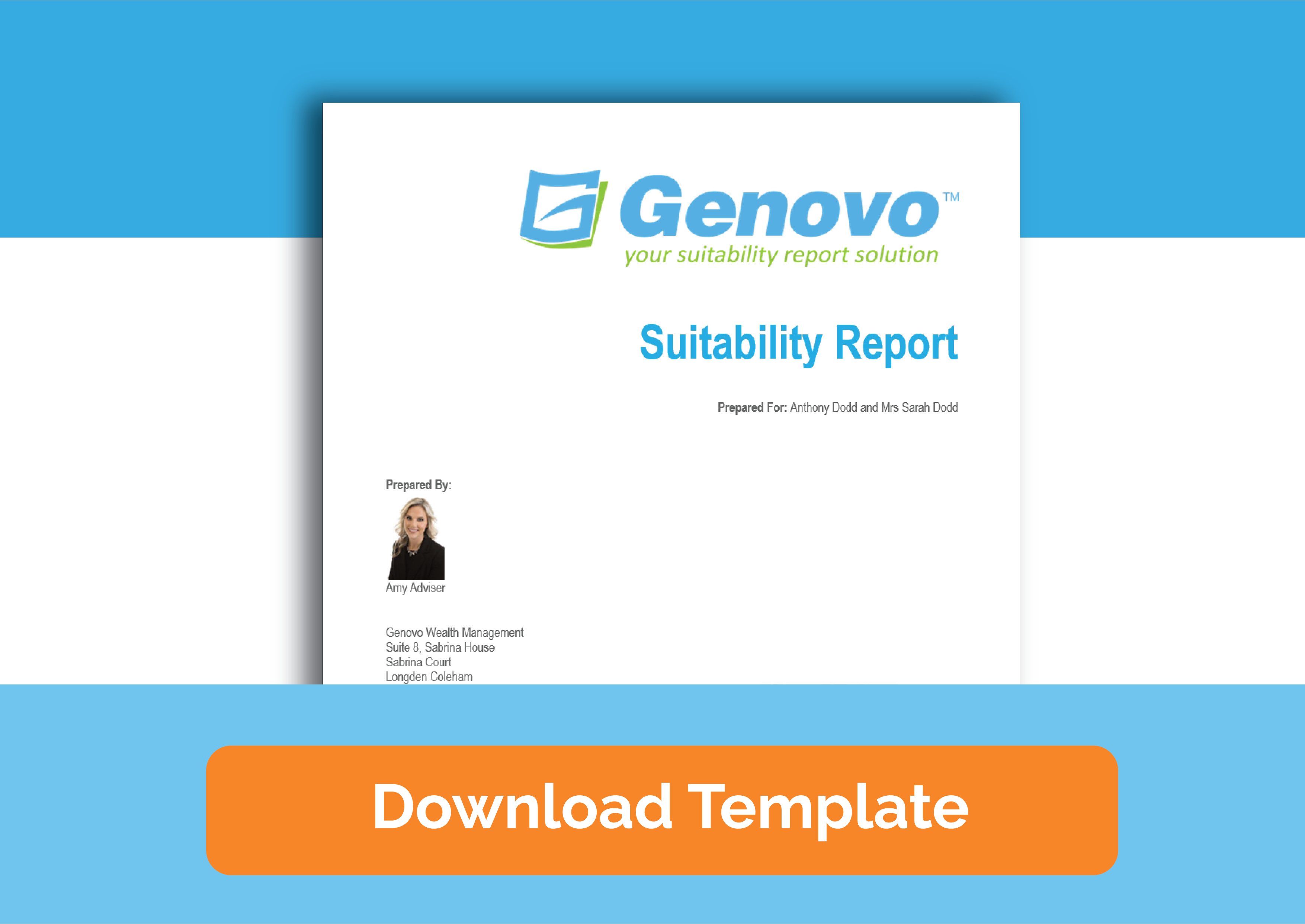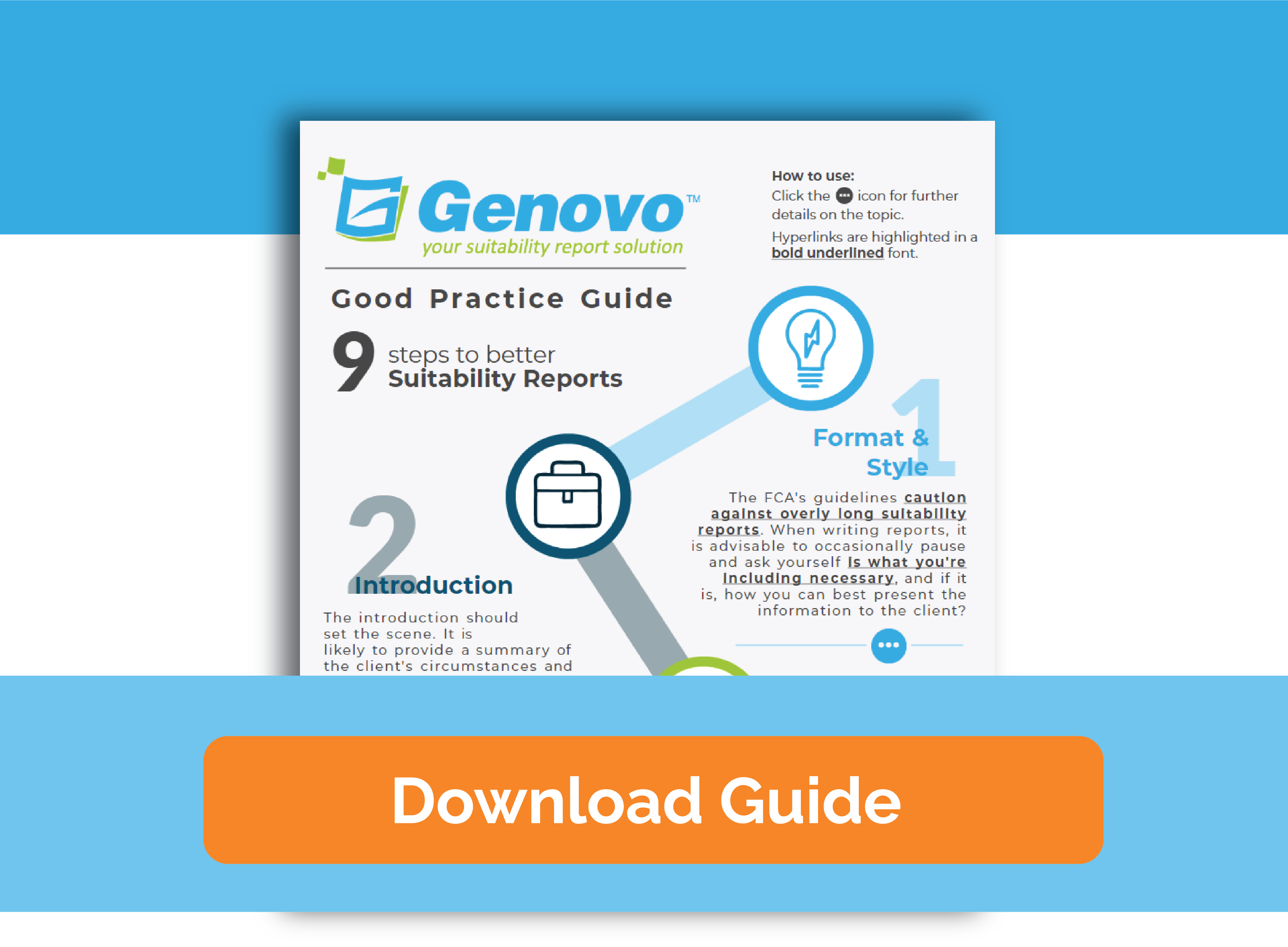
How does Genovo help you fulfil the FCA’s expectations when recommending replacement business – Part 1
Richard Lent
 |
IMPORTANT – This user tip relates to an older version of Genovo. Although much of the content and many of the concepts still apply to the current version of Genovo, the screenshots and some instructions may no longer be accurate. |
Welcome to April’s user tip blog…
Before I start I just wanted to say I hope you and your families are all keeping well and getting used to what is our new normal, at least for the next few weeks anyway. As an online business the physical change to working from home was a relatively simple one, but the mental challenge was a little tougher. I’m now into a new routine and things have gotten a lot easier that’s for sure.
It feels like our industry has rolled its sleeves up in the past couple of weeks and it feels more like business as usual, which is great to see. With this in mind I wanted to put this blog together to explain how Genovo can help you meet your FCA requirements for replacement business. Once I’d started putting the blog together I realised just how much there is to cover, so this will be the first of a series 3 blogs that will be released over the coming weeks.
What is replacement business?
So, what is replacement business? In a nutshell replacement business refers to the process of recommending that an existing product or investment is switched, transferred or encashed and replaced with an alternative plan.
One notable exception is fund switches. There is much debate in the industry about whether fund switches are classed as replacement business, and we don’t feel they are. Whilst there are still cost comparison disclosure requirements and you still need to ensure suitability for your client, we don’t feel you need to follow the full replacement business process when simply carrying out fund switches in isolation (no pun intended).
What are the FCA requirements for replacement business?
So let’s take a look at what the FCA requires of you. You’ll find much of the regulator’s guidance around replacement business dates back to 2012 and is covered off in the FSA’s Finalised Guidance paper entitled ‘Replacement Business and Centralised Investment Propositions’
More recent FCA guidance states that when undertaking replacement business, you need to ensure you:
- Consider objectively your client’s needs and objectives.
- Collect necessary information on your client’s existing investments and the recommended new investments, such as the product features, tax status, costs and the performance of the underlying investments.
- Implement a robust risk-management system to mitigate the risk of unsuitable advice and poor client outcomes.
In summary, this means that you must be able to demonstrate that the advice is suitable and in the client’s best interest. Moreover, you must be able to justify the recommended course of action with any associated disadvantages – for example ‘the recommended investment is more expensive than the existing investment’ – clearly highlighted.
Replaying the client’s objectives
So, let’s take a look at how Genovo helps you meet these requirements, starting with the replaying of the client’s objectives.
Within Genovo you are always prompted, in a suitability report, to confirm the client’s objectives in the Client Objectives step of the Introduction section. As you know this step comes preloaded with a number of standard advice options designed to cover some of the more commonplace advice scenarios.

However, given the FCA have, for some time now, highlighted the need to use client specific objectives and advised against relying on generic objective statements that frequently remain unchanged. How does Genovo handle this?
Well, first off I’d highlight that Genovo’s standard objectives are deliberately worded in such a way as to give them more of a client as opposed to a product focus. Secondly, as with any advice option or advice reason step in Genovo, the wording of the selected option is fully editable and can be further personalised to the client and their circumstances.
What’s more on selecting an objective you are prompted to add extra ‘Know Your Client’ information to it to provide that extra colour and detail that the likes of Rory Percival are always so keen to see in a suitability report.

When you select an objective, you’ll notice that an add kyc info link appears to the right. If you click on this link you’ll be taken to a new page where you can now personalise the wording of the headline objective, and also add some additional Know Your Client information to it. The FCA has also said in its list of good practice that
..including the client’s own words can be helpful as a guard against routine form-filling and making sure that the logic and direction of the recommendation is tailored to the client’s stated objectives.
And it’s here that you should so just that.

You can also give each of the objectives a display order so they appear in the report in the order of importance to the client. This is not only recognised as good practice by the FCA, but it also reaffirms to the client that you have listened, and you understand what is important to them.
However, if none of the standard options are appropriate, or you simply wish to create your own, you can always add your own objective by clicking add advice option. The adding of custom options is a feature you’ll see throughout Genovo and really allows you to go to town on personalising your reports.

Once you’ve added in the full detail, you have the option to
- Just add the objective to this report;
- Add it to this report and save it to your Advice Option and Reason library so you can select it in future reports; or
- If you’re an Account Admin of a multi-user company plan, you can add it to this report, save it your library, AND mark it up as shared so it’s available for selection by you and all of your other account’s users.
Spelling out the clients objectives in one place will enable you to give them each due consideration to ensure the recommendations that follow are suitable. When adding the why’s, the what’s and the how’s to the rest of your report, make sure you relate them all back to the objectives recorded.
Further Reading
I hope you’ve found this useful. In a couple of week’s time I will continue this series of blogs by taking a look at how Genovo helps you identify and explain the product features within the existing schemes and highlight any key disadvantages or tax implications of your advice. In the meantime, there’s lots of information out there on this subject, but some of the documents and articles that you might find particularly useful are listed below.
FCA (or FSA as it was at the time) guide to assessing suitability for replacement business
Rory Percival clarifies what the FCA expects
Genovo blog – Client Objectives in Suitability Reports: What the FCA Expects of You
Whilst some of these articles and documents were published a number of years ago, their content still remains just as valid and relevant to this day.
Make sure you don’t miss any of our hints & tips – subscribe and get email alerts when we update our blog.

